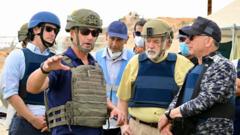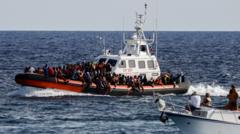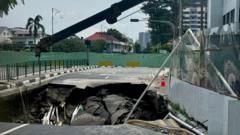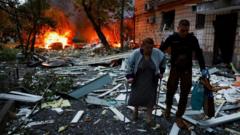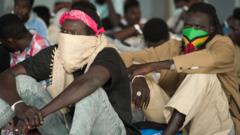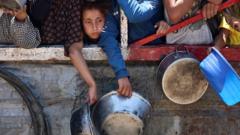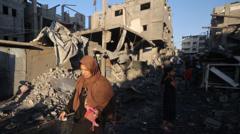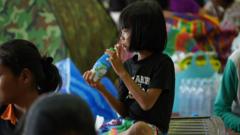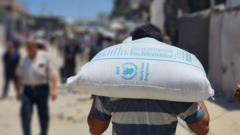A recent surge in drone strikes against gang territories in Haiti poses questions about legality, effectiveness, and international ramifications as civilians bear the impact.
Haiti's Drone Warfare: A Legal Quagmire in the Fight Against Gangs

Haiti's Drone Warfare: A Legal Quagmire in the Fight Against Gangs
As Haiti battles rampant gang violence, the use of drone strikes raises significant legal concerns, sparking controversy and debate.
In a bold move to regain control from violent gangs, the Haitian government has engaged in a controversial campaign of drone strikes, targeting notorious gang leaders like Vitel’homme Innocent, who is marked with a bounty of $2 million. Video footage disseminated by local authorities illustrates efforts to combat the escalating violence that has forced over 1.3 million residents to flee their homes. Drones equipped with explosives symbolize Haiti's urgent yet troubling strategy to counter the overwhelming influence of gangs, which currently dominate over 80 percent of Port-au-Prince.
Amid the burgeoning air assaults, notable detours have emerged. While the strikes have reportedly resulted in at least 300 gang member fatalities, without a single high-profile gang leader captured or killed to date, the effectiveness of these drone operations is now being questioned. A shift in stance from Canadian authorities, who initially provided the drones, also complicates matters, with police labeling the strikes as illegal, thus further clouding the future of aerial interventions.
The gangs, operating under the coalition known as Viv Ansanm, are notorious for extorting residents, engaging in kidnappings, and maintaining control through violence. The Haitian government, grappling with this complex security crisis, evidently views drone strikes as a necessary evil in reclaiming power from armed groups. However, with the rising civilian casualty count, including four reported deaths linked to gang retaliation, clarity on the legitimacy of drone warfare in this context remains murky.
As this situation progresses, critical questions arise regarding the legality of drone strikes against criminal entities and their potential ramifications on human rights and international law. The need for accountability and an effective strategy beyond aerial bombardments is becoming increasingly urgent as Haiti navigates this perilous landscape.
Amid the burgeoning air assaults, notable detours have emerged. While the strikes have reportedly resulted in at least 300 gang member fatalities, without a single high-profile gang leader captured or killed to date, the effectiveness of these drone operations is now being questioned. A shift in stance from Canadian authorities, who initially provided the drones, also complicates matters, with police labeling the strikes as illegal, thus further clouding the future of aerial interventions.
The gangs, operating under the coalition known as Viv Ansanm, are notorious for extorting residents, engaging in kidnappings, and maintaining control through violence. The Haitian government, grappling with this complex security crisis, evidently views drone strikes as a necessary evil in reclaiming power from armed groups. However, with the rising civilian casualty count, including four reported deaths linked to gang retaliation, clarity on the legitimacy of drone warfare in this context remains murky.
As this situation progresses, critical questions arise regarding the legality of drone strikes against criminal entities and their potential ramifications on human rights and international law. The need for accountability and an effective strategy beyond aerial bombardments is becoming increasingly urgent as Haiti navigates this perilous landscape.

